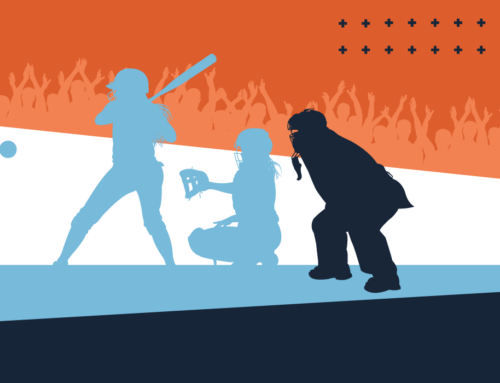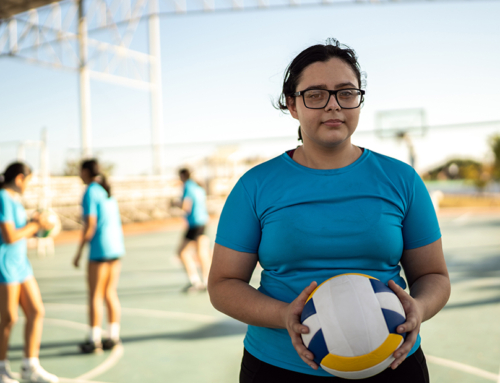Generation Z includes those children born between 1997-2010, alternatively known as ‘Zoomers’ or the ‘Wii Generation.’ Their parents usually are Generation-X (Slackers, from Douglas Copeland’s novel and the movie) who have come to terms with digital technology but didn’t grow up with it like their children are now.
It is dangerous to label an entire generation of people with the same characteristics but also practical. Remembering that every one of your athletes is an individual. Some broad traits have been identified in this age group compared to previous generations. This will help you understand your athletes better. They include:
- More stressed and depressed
- More food allergies.
- Less sleep than is required.
- Lower attention spans (6 minutes per task).
- Earlier onset of puberty.
- Lower ability to cope with adversity.
- Lower vocabulary and communication skills, including reading.
What Does This Mean For Coaches?
It might be tempting to ‘lean into’ Generation-Z’s affinity with technology and digitize everything you do. But, just because they are spending a lot of time looking at screens doesn’t mean that they want to or beneficial. One study showed that those children with suicidal thoughts were spending 5-7 hours a day online than others who were 2-3 hours a day. We know that increased screen time is part of sleep deprivation and also contributes to the reduction in concentration spans.
Communication and Technology
When working with one Sporting Governing Body, the administrators suggested that all communication be done through a learning app, by-passing the parents and going straight to the athletes’ phones. This is tempting to ‘get the message out there.’ But, there was no filter, and soon the athletes had hundreds of alerts on this app every month. Any critical piece of information such as, ‘Training has been moved to a different venue tonight,’ got lost amongst the memes, videos and motivational quotes posted by dozens of users. This app also had to compete with Snapchat, Tik-Tok, and YouTube that were constantly alerting and vibrating.
The other coaches and I stopped adding fuel to the fire and reduced the number of messages sent to the athletes. Instead, we briefed them face to face using flip charts, whiteboards, and the occasional presentation on a group screen. Here we could explain ‘Why’ we were doing things and then outlined ‘How’ we were going to do it. The athletes could ask us questions, and we could check their understanding.
Athletes’ anxiety needed to be reduced and that they liked to know what would happen and how it helped them. Their curiosity was peaked. We banned phones from training sessions and also at mealtimes. The athletes talked to each other and, unsurprisingly, their concentration improved within the coaching sessions.
6-Minute Guideline
We recognized their shorter attention spans and the 6-minute guideline was a good reminder to keep things short and then change them. That didn’t mean changing the entire practice every 6-minutes, but we could change the focus, or install a short ‘reboot, refresh and refocus’ break of 30-60 seconds. This allowed the athletes to chat, get a drink, let their minds unwind, and go again.
As Coaches, we did not give handouts of research documents, but we did give out infographics where appropriate. These were pieces of paper that could be accumulated into a folder. It was a bit like getting fax in today’s office environment: you will be swamped by emails and phone notifications but when that dusty old piece of equipment starts churning out the shiny paper, I guarantee you will gather around it with eager anticipation.
Having one handout a week with smaller amounts of relevant and digestible information meant the athletes could accumulate the information and absorb it gradually. It is tempting to give out a 32-page playbook, but that is daunting to the Generation-Z child.
Choices
The need for choice in their lives is also essential for Generation-Z, but too much choice leads to anxiety. Anyone who has had to choose from a 5-page menu in a restaurant understands Rather than inducing decision fatigue, create a limited menu of choices: the equivalent of fish, meat, vegetarian.
This can range from choosing partners, the order in which exercises are performed, or the weights they lift within the gym. The coach can set the framework but isn’t micromanaging percentages and who is working with whom. The athletes take ownership and can feel involved in shaping their programs. I use this in athletic development sessions, I explain the theme of the session, e.g., speed, strength, or control, and then can remind them if they choose a weight that is too light or heavy for that theme. But, they mostly get it right. This also teaches the athletes to take responsibility for their actions in small steps.
The same applies to dealing with adversity. This generation might need encouragement and support to persevere after only one or two unsuccessful attempts at a new skill. Creating an environment of learning, trust, and support will lead to them having the confidence to tackle more challenging tasks. Athletes will realize that sweating and being out of breath is a normal reaction to trying hard.
Original article from stack.com
Read More



